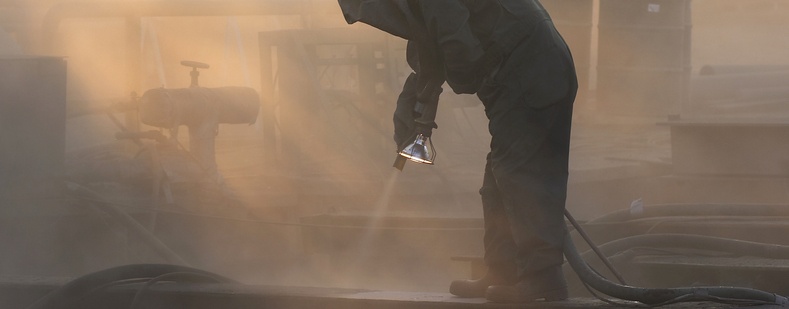OSHA's Final Rule to protect workers from silica is now in effect. Companies that clean, restore, or prepare concrete and stone now have a greater job site responsibility related to respirable crystalline silica that becomes airborne during this process. In their Final Rule, OSHA has reduced the permissible exposure limit (PEL) for respirable crystalline silica to 50 micrograms per cubic meter of air, averaged over an 8-hour shift. To lower airborne silica created by construction processes, OSHA is requiring companies to add engineering controls to concrete, stone and other masonry cleaning and repair processes.
Silica Risks from Sandblasting and Abrasive Blasting
People have understood the risks silica poses from sandblasting for generations. When sandblasting was invented, sand containing silica was primarily used. As knowledge spread about the harm silica caused, industrial companies started to blast with alternate abrasives that had less silica content such as coal slag or garnet. However, the silica dust coming from the surface being prepared was rarely taken into account. As surfaces like concrete, stone, and tile are blasted, silica is launched into the air as the abrasive collides with the surface. If silica is inhaled, it can be deadly.
Respirable crystalline silica dust can only be seen at a microscopic level. When a worker breaths while in an environment containing silica dust, these crystal fragments embed themselves in the lining of the worker’s lungs. The long-term exposure to silica leads to Silicosis, a serious lung disease that is responsible for tens of thousands of deaths each year.
Engineering Controls to Limit Respirable Crystalline Silica
Engineering controls are processes or equipment incorporated into construction or manufacturing environments. The CDC (Center for Disease Control) explains engineering controls as protection for workers “by removing hazardous conditions or by placing a barrier between the worker and the hazard.” An engineering control for limiting airborne silica dust would be suppressing the respirable crystalline silica at the source of generation.
Sponge Media is an example of an engineering control for dust suppression. The Sponge-Jet process can suppress up to 99% of dust generated when the media hits the surface. Sponge Media is listed in the OSHA Abrasive Blasting Fact Sheet as a “Less Toxic” abrasive and is the only media listed that can create any range of surface roughness on concrete between an ICRI CSP-3 to CSP-7. Sponge Media blasting is a dry process, so there is no runoff to contain on a job site. Sponge Blasting can be done both inside and outside with reduced containment and negative air.
OSHA will begin enforcement of this rule for the construction and restoration industry on September 23rd, 2017.








